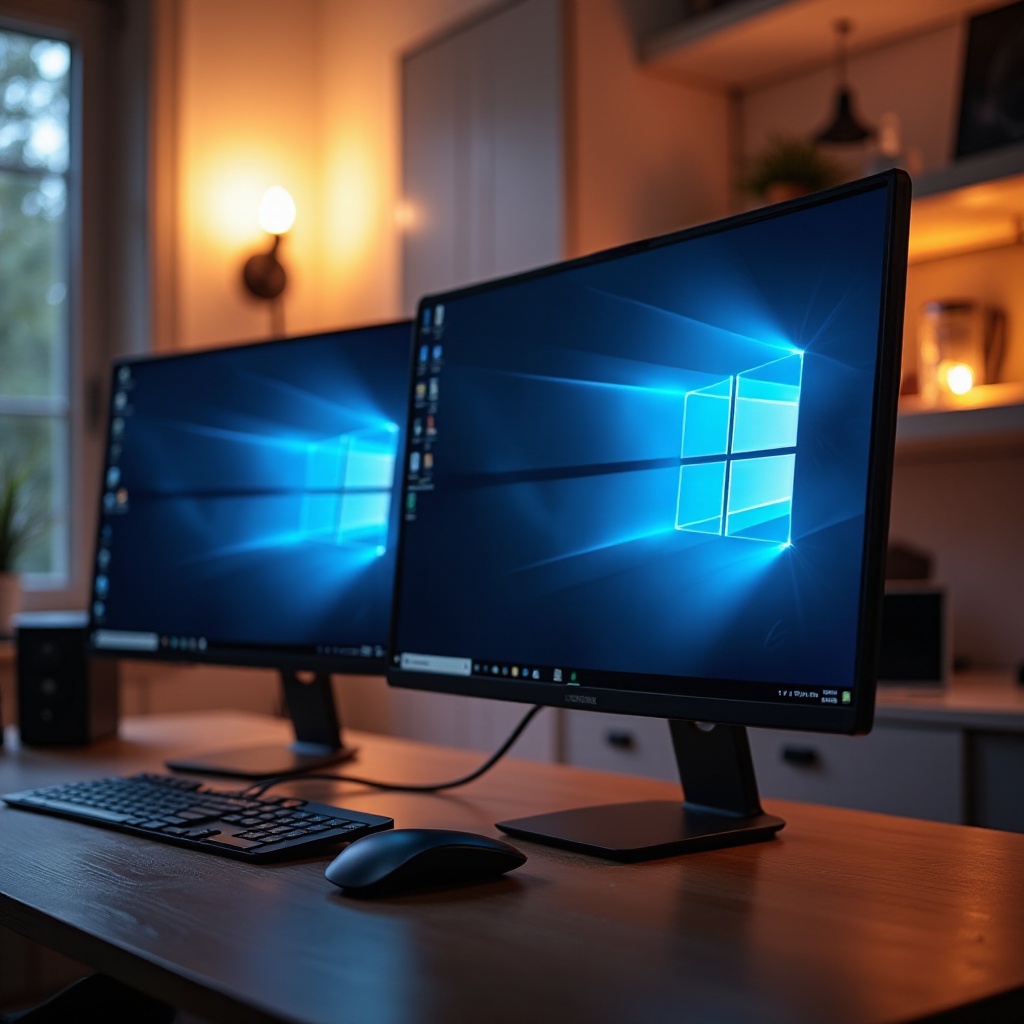Introduction
Are you considering a switch back from Windows 11 to 10? With the arrival of Windows 11, users have been eager to explore its new features. Yet, not all find the new OS a perfect fit for their needs. You might be wondering if it’s possible to revert to Windows 10. Fortunately, you can. This guide will outline why you might want to downgrade, the preparations necessary, and steps to undertake a successful switch back. Let’s explore how transitioning back to Windows 10 can be seamless and effective for your needs.

Why Consider Downgrading from Windows 11 to 10?
Windows 11 introduces numerous improvements designed to enhance user experience. Despite these advancements, some users face compatibility issues with older software or hardware not supported by Windows 11, causing a drop in productivity. When specific applications or hardware essentials fall short, reverting may seem like a logical choice.
For many, Windows 10’s familiar interface and performance foster a productive work environment. Its stable design and continued updates offer a trusted platform crucial for daily tasks. If these scenarios sound familiar, a downgrade could present a beneficial alternative. However, important considerations must weigh in before proceeding.

Important Considerations Before Downgrading
Before diving into the downgrade process, certain factors deserve careful thought. Microsoft allows a limited post-upgrade period where you can revert seamlessly without data loss—typically, this is within 10 days of installing Windows 11.
Consider the status of your data and applications. While it generally remains untouched during a rollback, some settings or apps may not work as expected. Additionally, drivers and software primarily designed for Windows 11 might require updates or reinstalls post-downgrade. Analyze whether specific application issues under Windows 11 can be resolved without reverting to Windows 10. Should you choose to downgrade, prepared transitions can mitigate potential hurdles.
Preparing for the Downgrade Process
Effective preparation is vital for a successful downgrade. Here are the essential steps:
Backing Up Your Data
It’s imperative to safeguard your files before altering your system. Use an external hard drive or cloud service like OneDrive, Google Drive, or Dropbox to securely store critical documents, photos, and other personal data.
System Requirements and Compatibility
Verify your system’s compatibility with Windows 10. If your system supports Windows 11, it’s likely compatible, but it’s wise to double-check Microsoft’s official specifications to ensure seamless operation.
Gathering Necessary Resources
Have your Windows 10 product key at hand. If not available physically, you might find it linked to your Microsoft account. Ensure constant internet access and have Windows 10 installation media ready—either a bootable USB drive or DVD.
How to Downgrade from Windows 11 to Windows 10
Once adequately prepped, select the most suitable downgrade method:
Using the Windows Rollback Option
- Navigate to Settings > System > Recovery.
- Under Recovery options, click Go back.
- Follow on-screen steps to revert to Windows 10 from Windows 11 easily, provided the rollback period remains active.
Performing a Clean Installation
- Use the Media Creation Tool from Microsoft’s site to prepare Windows 10 installation media.
- Boot your system from this media by accessing the boot menu (commonly reached via pressing a key like F12 at startup).
- Proceed with Windows 10 installation, opting for a clean setup to override Windows 11.
Troubleshooting Common Issues
If faced with issues such as files missing or installation failures, inspect BIOS settings for correct boot priorities or secure boot configurations. Escalate persistent problems to Microsoft’s forums or seek professional tech assistance.
Setting Up Windows 10 After Downgrade
After restoring Windows 10, it’s time to set up your system:
Restoring Data and Programs
Retrieve and restore your data from backups. Reinstall essential applications and ensure they operate correctly on Windows 10.
Updating Drivers and Software
Keeping drivers current is crucial for stable system performance. Use Windows Update or visit manufacturers’ sites to acquire the latest hardware drivers.
Personalizing Your System Settings
Customize Windows 10 to suit your preferences, including adjusting display configurations, notification settings, and system parameters to re-establish a comfortable workspace.

Conclusion
Reverting from Windows 11 to Windows 10 is manageable with the right guidance and preparation. Weigh the impacts and runtime demands before making your decision. For many, downgrading is a strategic move back to a familiar, stable, and reliable operating environment.
Frequently Asked Questions
How long do I have to downgrade from Windows 11 to 10?
You have 10 days post-upgrade to use the rollback option back to Windows 10. Post this period, a clean installation becomes necessary.
Will downgrading affect my files and applications?
Rollback often doesn’t affect files but may necessitate application reinstalls. A clean installation erases data, so timely backup is crucial.
Can I upgrade back to Windows 11 after downgrading?
Yes, you can return to Windows 11 if your device is compliant, via Windows Update or by installing manually through Microsoft’s site.
